
CodeNotes: Bonding of corrugated stainless steel tubing gas piping systems
![]() This edition of CodeNotes — Bonding of Corrugated Stainless Steel Tubing (CSST) Gas Piping Systems — reflects the new 2021 editions of the International Fuel Gas Code and the International Residential Code. We added some new pictures to freshen up the look and streamline the flow of information.
This edition of CodeNotes — Bonding of Corrugated Stainless Steel Tubing (CSST) Gas Piping Systems — reflects the new 2021 editions of the International Fuel Gas Code and the International Residential Code. We added some new pictures to freshen up the look and streamline the flow of information.
Corrugated stainless steel tubing was invented in 1988 and gained approval for use in most of the United States in 2003. Since then, CSST has gained in popularity as contractors have quickly discovered it could be installed in a third of the time with fewer fitting, which reduces the likelihood of leaks. It is estimated to be used in more than half of the homes built today.
General
 The 2021 International Fuel Gas Code (IFGC) and International Residential Code (IRC) have reaffirmed (without any modifications) the requirements for the electrical protection of corrugated stainless steel tubing (CSST). CSST may be protected either by installation of an extra bonding connection (IFGC Section 310.2/IRC Section G2411.2) or by the use of a listed arc-resistant jacket (IFGC Section 310.3/IRC Section G2411.3) in accordance with the national standard CSA/ANSI LC-1.
The 2021 International Fuel Gas Code (IFGC) and International Residential Code (IRC) have reaffirmed (without any modifications) the requirements for the electrical protection of corrugated stainless steel tubing (CSST). CSST may be protected either by installation of an extra bonding connection (IFGC Section 310.2/IRC Section G2411.2) or by the use of a listed arc-resistant jacket (IFGC Section 310.3/IRC Section G2411.3) in accordance with the national standard CSA/ANSI LC-1.
The permanent bonding of non-arc-resistant (yellow) CSST piping systems directly to the grounding electrode system of the structure in which the CSST is installed serves to lower the voltage build-up on the CSST caused by unintentional energizing from outside sources such as lightning strikes. The installation of an extra bonding connection is in addition to the bonding required in IFGC Section 310.1/IRC Section G2411.1 for ground fault protection. The bonding helps achieve an equipotential state between the CSST and other similarly bonded metallic systems (such as the water piping, structural steel, electrical raceways and coax cable). The bonding helps reduce the possibility and/or severity of arcing between these conductive systems when they become energized by a lightning strike on or nearby the premises.
The 2018 and 2021 IFGC and IRC recognize advances made by CSST manufacturers to produce a more robust, arc-resistant, (black) jacket system that does not require the direct bonding required for traditional (yellow) CSST products. Arc-resistant, black jacketed, CSST products are designed to provide the same or greater level of protection against arcing by using a jacketing system designed for that purpose. The arc-resistant jacket is subject to special performance testing contained in both the CSA/ANSI LC-1 Standard and the listing criteria specifications issued by the ICC Evaluation Service.
The following summary highlights the various steps, hardware and practices needed for the successful electrical protection of the CSST gas piping system using both approaches.
Arc-resistant (black) CSST
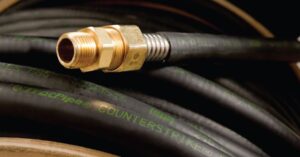
Arc-resistant (black) CSST is characterized by a thick black jacket or a multi-layer black jacket system. The single-layer black jacket is designed to absorb arcing energy caused by a lightning strike preventing perforation of the tubing wall. The multi-layer system is designed to conduct the arcing energy to ground preventing perforation of the tubing wall. Both arc-resistant jacket systems provide equal protection along the entire length of the piping system, and the extra bonding described in this CodeNotes is not required.
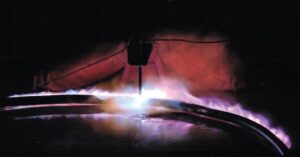
The electrical protection afforded by the arc-resistant jacket has been shown to be equal or greater than the electrical protection provided by the bonding conductor. Ground fault protection of arc-resistant CSST is handled in the same manner as steel pipe and depends only on the presence of an equipment grounding conductor contained within a branch circuit, which powers one or more of the gas appliances served by the entire piping system.
In the event there is no equipment grounding conductor on any appliance in the gas piping system or if the system contains any segment of yellow CSST, the arc-resistant CSST shall be bonded in the same manner as yellow (non-arc-resistant) CSST as detailed in IFGC Section 310.2/IRC Section G2411.2.
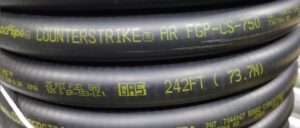
For jurisdictions using the 2015 or earlier editions of the IFGC or IRC, the bonding requirements for arc-resistant CSST (black jacket) are the same as for yellow-jacketed CSST except where the local code has been amended or the AHJ permits installation per manufacturer’s installation instructions and the PMG listing of the product based on the jurisdiction’s authority under the alternate approval provisions of the code.
Note: Black jacketed CSST piping that is certified as arc-resistant is marked with the letters “AR” (Arc-Resistant) indicating compliance with the CSA/ANSI LC-1 standard. Inspectors should note the presence of this marking when inspecting for compliance with IFGC Section 310.3/IRC Section G2411.3.
Bonding non-arc-resistant (yellow) CSST
Grounding electrode system
The grounding electrode system includes all of the grounding electrodes available and the grounding electrode conductor(s). All electrodes used must be bonded together into one common grounding electrode system in accordance with IFGC Section 310.2.3/IRC Section G2411.2.3. A separate grounding electrode and grounding system cannot be established just for the fuel gas piping system. The installation and inspection of the grounding electrodes and grounding systems is the responsibility of the electrical contractor and electrical inspector.
Bonding conductor
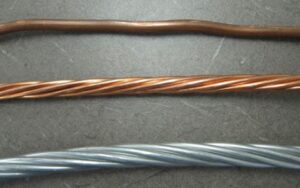
The bonding conductor can be a solid or stranded copper or aluminum conductor. The conductor can be installed indoors or outdoors.
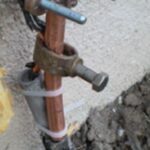
The bonding conductor must be not smaller than a 6 AWG copper wire or the equivalent size if made of aluminum. The bonding conductor must be no longer than 75 feet (22,860 mm). The location of the bonding clamp on the gas piping system must be selected to comply with the maximum allowable conductor length. In general, the shortest bonding conductor will be the most effective.
The means for attaching the bonding conductor to the grounding electrode system must be in accordance with NFPA 70, and the location for the bonding connection includes one of the following:
- one of the grounding electrodes
- the grounding electrode conductor
- the service enclosure
Bonding clamp and locations
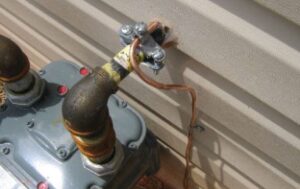
The bonding conductor must be attached to the CSST gas piping system downstream of the point of delivery (either the natural gas meter or the LP 2nd stage regulator). The bonding clamp can be mounted at any location within the piping system, however, the clamp must be attached to a length of rigid pipe, a malleable iron pipe fitting, a prefabricated manifold, or a brass CSST fitting. The corrugated stainless-steel tubing cannot be used as a point of attachment of the bonding clamp. The clamp used must be listed for the location and type of mechanical attachment. Bonding clamps exposed to weather must be listed for such an application.
Only a single point of attachment is required regardless of the length or complexity of the piping system. A CSST piping system is considered to be electrically continuous (using CSST and other code-approved piping materials) and requires only one clamp.
The conductor must be attached to the piping system using a listed bonding clamp in accordance with UL 467. The bonding clamp must be accessible and can be located outdoors or indoors.
Where the clamp is attached to rigid pipe, the pipe surface must be clean and free of paint and coatings to enable a metal-to-metal connection.
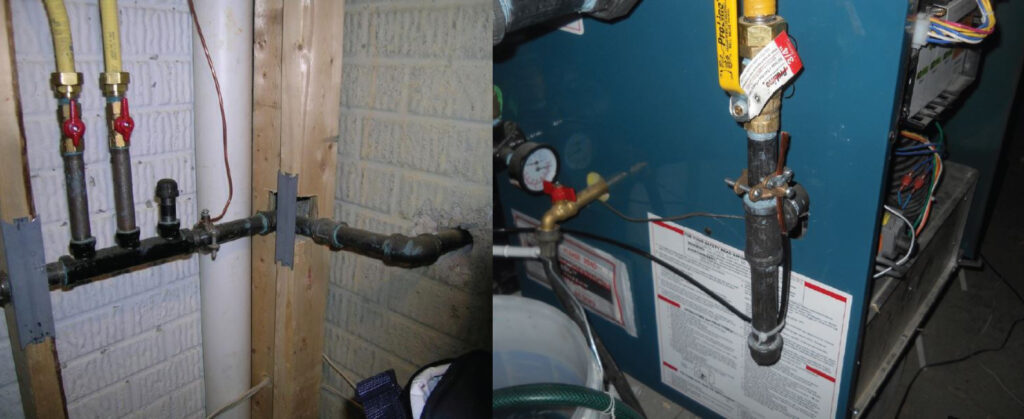
Retrofit piping system considerations
Existing steel or copper piping systems must be retroactively bonded when modified by adding yellow (non-arc-resistant) CSST to the system regardless of the length of CSST added. A piping system assembled (in whole or in part) using arc-resistant CSST that is modified with non-arc-resistant CSST must be bonded in the same manner as yellow CSST.
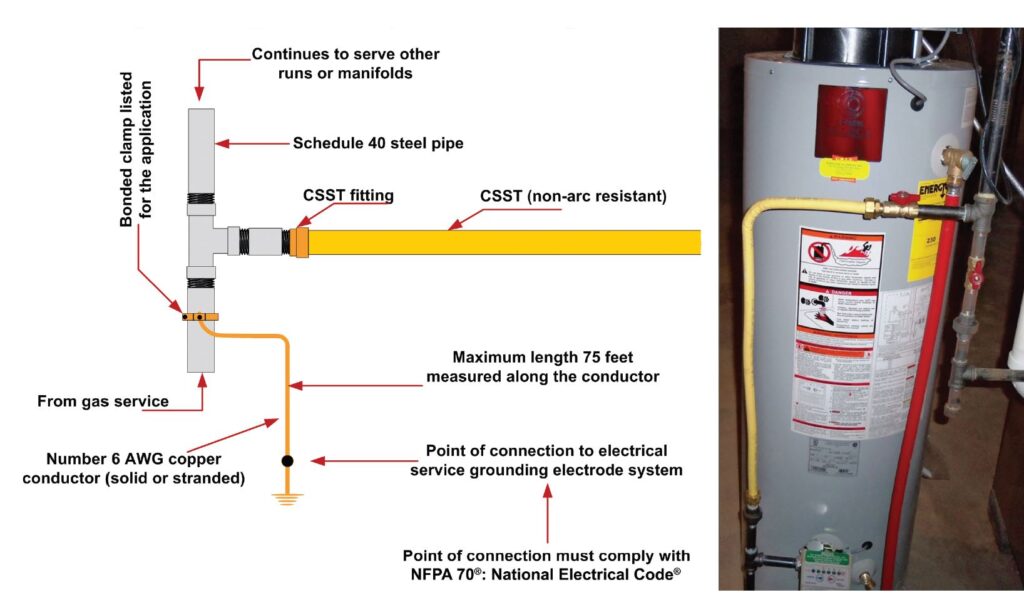
As part of its goal to serve the needs of plumbing, mechanical and fuel gas (PMG) officials, the ICC PMG Official Membership Council is committed to providing free, informative code support documents known as CodesNotes that can be used to complement building departments’ in-house weekly supplemental training. We hope you enjoy this newest edition of CodeNotes. Past topics include backflow devices and the protection of the water supply, gas pipe sizing based on the latest edition of the International Fuel Gas Code and the International Residential Code, and bonding of corrugated stainless steel tubing gas piping systems, just to name a few. The CodesNotes collection has recently been expanded to include a selection of notes offered in Spanish.
The ICC PMG Official Membership Council website offers many resources. The council — open to all ICC members and serving the needs of PMG officials and industry professionals — consists of a great team of professionals who are willing to share their technical expertise and experiences. You’ll have the opportunity to discuss issues that you face as a community, and how ICC might best serve you. If you haven’t already done so, please go online and become a member of the PMG Official Membership Council.










